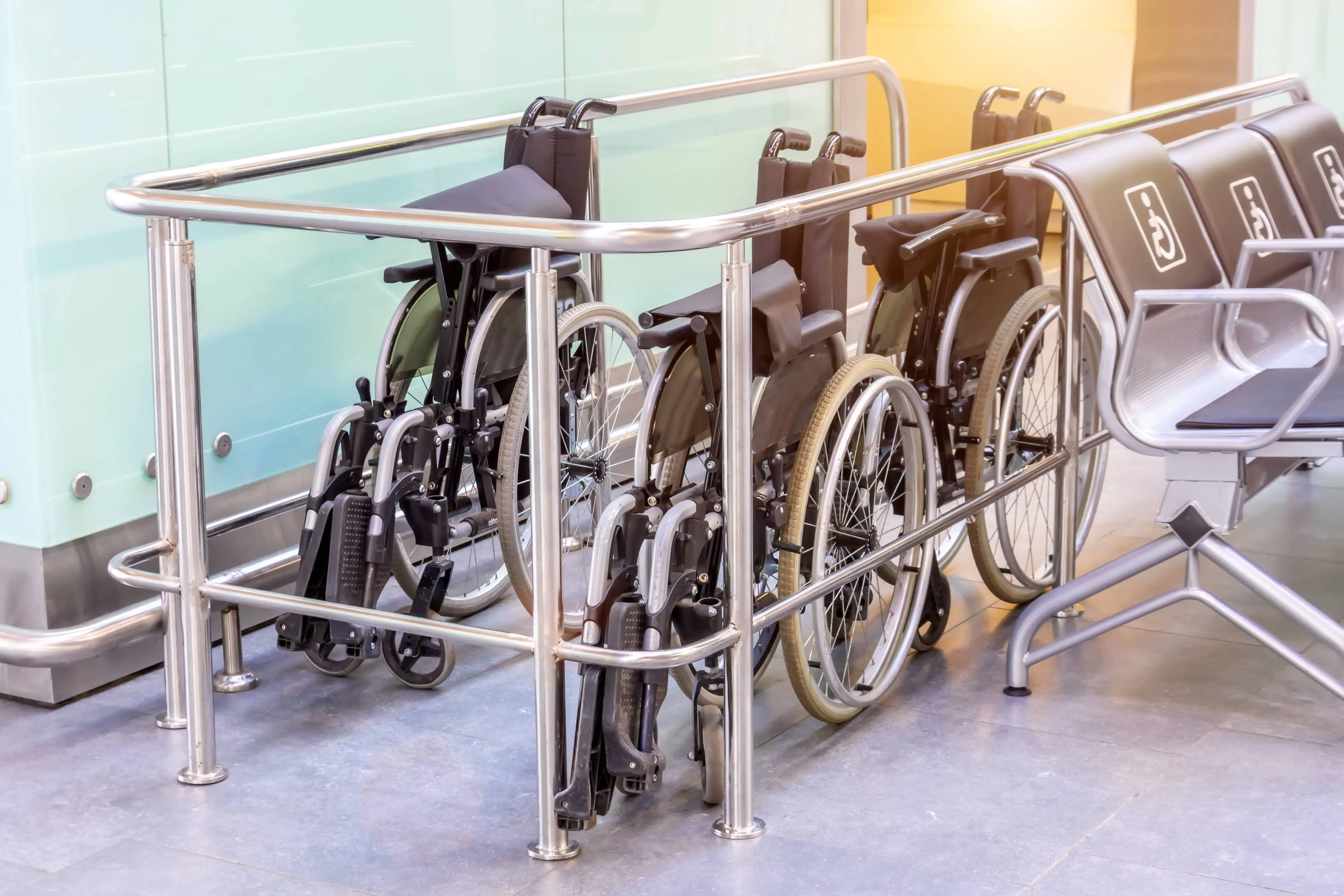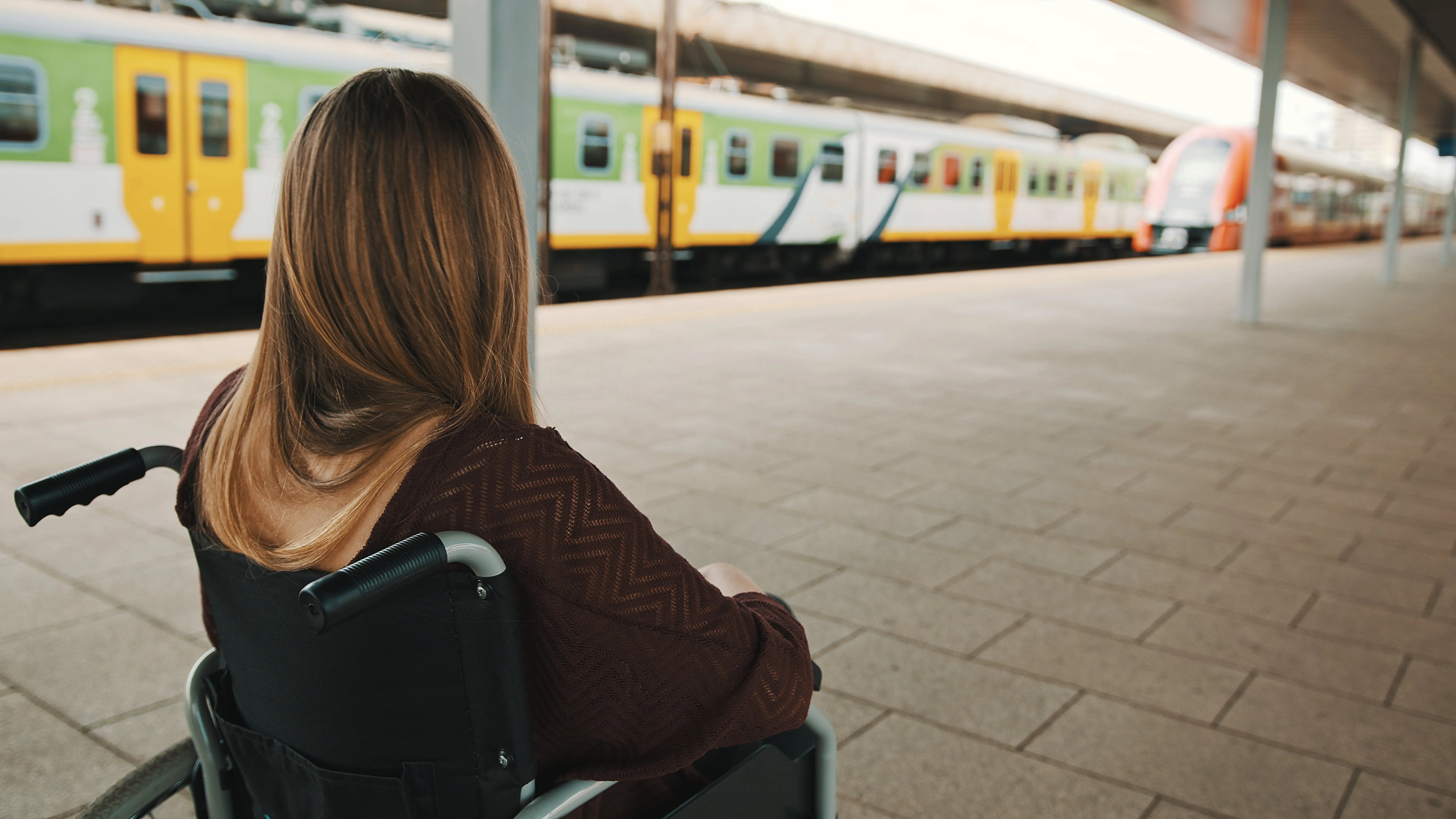Despite modern efforts to prioritise accessible trains, rail transport has historically posed challenges for disabled people. For many years, disabled travellers faced significant difficulties when using trains.
Accessibility standards have improved over time, and while there is still work to be done, trains are now more accessible than ever before. This article explores the journey of train accessibility, highlighting key improvements and ongoing efforts to support disabled travellers.

Campaigning for the right to travel
Throughout history, several key acts have supported train accessibility:
- The Transport Act (1985) established the ‘Disabled Persons Transport Advisory Committee’,a statutory body which advises the government on improving accessibility.
- The Railways Act (1993) required the Secretary of State to maintain a Code of Practice to protect disabled rail passengers.
While these acts were a positive step, discrimination against disabled people remained legal in Britain at the time. With limited enforcement, progress was slow, prompting campaigners to take action.
In the 1990s, the disabled people’s ‘Direct Action Network’ (DAN) staged over 100 protests to push for real change.
Acts against discrimination
Public pressure led to the introduction of the Disability Discrimination Act (1995), Britain’s first law against disability discrimination. This action required station operators not to discriminate against disabled passengers and set improved accessibility standards for transport.
The 1998 Rail Vehicle Access Regulations (RVAR) introduced key accessibility requirements such as:
- Wheelchair access on trains
- Accessible toilets
- Handrails and handholds
- Control devices
- Audible and visual traveller information
Later, The Equality Act (2010) incorporated previous laws, strengthening disabled people’s rights and obliged transport providers to make reasonable adjustments for disabled passengers.
Strategies for access
In 2006, the government introduced the UK’s first accessibility strategy: the ‘Railways for All Strategy.’ This set expectations for rail operators to:
- Improve accessibility information
- Enhance staff training
- Improve station accessibility
- Increase the number of accessible trains
In July 2018, the government launched its ‘Inclusive Transport Strategy’, aiming for equal access to travel for disabled passengers.
Access for All
The ‘Access for All’ programme, launched in 2006, funds projects that improve station accessibility, such as step-free routes from the station entrance to the platform.
The initial fund was £390 million for station improvements, followed by £163 million in 2014. Despite this investment, Network Rail underspent by £99m in the most recent five-year period (2019-24) and failed to complete 72 projects. To address this, Network Rail established a Portfolio Sponsorship Office to oversee improvements.
Carry on campaigning
When the Elizabeth Line opened in 2022, it aimed to provide modern and accessible rail travel. However, initial plans excluded step-free access at seven stations. Protests from campaigners successfully pushed the government and the Mayor of London to fund improvements for these stations.
The fight for accessibility continues, with campaigners still challenging the barriers that rail presents to disabled travellers.
Ongoing issues for access
While accessibility has improved greatly , several challenges remain.
Step-free access
Step-free access allows passengers to reach platforms without encountering steps, improving travel for people with mobility impairments, parents with pushchairs, and those carrying heavy luggage.
Currently, only one-quarter of UK railway stations offer step-free access from the street to the platform. Although ramps and lifts help, some lifts are too small for larger wheelchairs or may be out of service, causing difficulty for disabled passengers.
Level boarding
Level boarding ensures train floors align with platform heights, making it easier for disabled people to board. Unfortunately, only two percent of UK railway stations offer this. There are no UK laws requiring new trains to meet standard platform heights, meaning level boarding is rare.
When level boarding is not available, staff may provide a manual boarding ramp, but this depends on staff availability. Some operators, like Merseyrail, are actively working to improve level boarding at all their stations.
Turn Up and Go (TUAG)
Disabled passengers can use Passenger Assist to book assistance in advance, but this limits spontaneous travel. ‘Turn Up and Go’ (TUAG) initiative ensures disabled travellers can access rail travel without pre-booking.
Although train operators aim to provide TUAG, its success relies heavily on staff availability.
Navigating stations with sight loss
To support visually impaired passengers, train operators have introduced:
- Tactile paving warns passengers that they are near the platform edge. (Network Rail has committed to installing it at all stations by 2025.)
- Braille and in audio description maps
- Staff guidance where available
- Braille buttons onboard trains
- High contrast colour schemes on handrails and external doors
- Audio announcements for station stops
- Wayfinding technology to help navigate stations
Not all disability is obvious
Train operators have started catering to passengers with hidden disabilities:
- The Sunflower Lanyard signals that a person may require additionalsupport.
- Some stations now have quiet areas for passengers overwhelmed by busy environments.
- Certain train operators have introduced support for people with dementia and learning disabilities.
Campaigners are continuing to push these provisions to become standard across the rail network.

Travelling with Avanti
Avanti West Coast is committed to supporting accessibility needs. Visit our Accessibility Hub to learn more about the support and schemes we offer.
For cheaper disabled train tickets, consider the Disabled Person’s Railcards, which can help you to save ⅓ on rail fairs for yourself and a companion.














